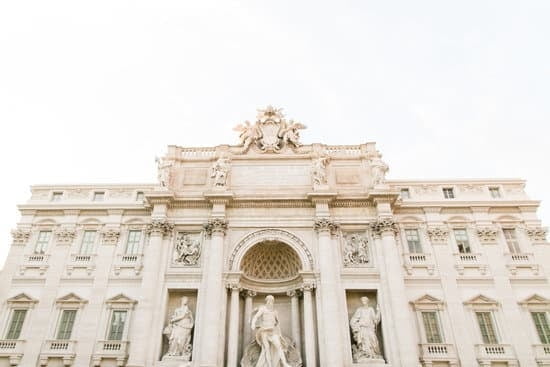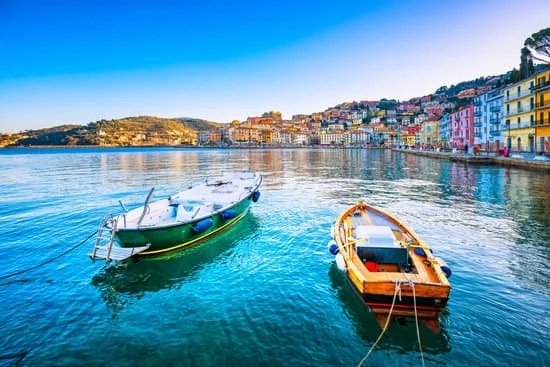US citizens may have questions about traveling to Italy for tourism, especially with current travel restrictions. This article aims to provide a comprehensive guide on understanding the current travel restrictions for US citizens, including visa requirements, COVID-19 protocols, top tourist destinations, cultural tips, transportation options, accommodations, and travel tips and safety measures. For those asking “can US citizens travel to Italy for tourism,” read on to find out everything you need to know before planning your trip.
Italy has slowly started allowing tourists from the United States to visit the country for leisure purposes. However, there are specific visa requirements that US citizens need to navigate through in order to travel to Italy for tourism. Additionally, it is crucial for US citizens to be aware of the COVID-19 protocols in place before visiting Italy amid the pandemic. This section will provide detailed information on both visa requirements and COVID-19 protocols.
Furthermore, once the necessary paperwork and health measures are considered, US tourists will want to explore the must-see places in Italy. This section will highlight top tourist destinations that US citizens should consider when planning their trip. Additionally, understanding Italian customs and etiquette is essential for a fulfilling experience as a tourist in Italy. This article also includes cultural tips that US travelers should keep in mind during their visit.
Visa Requirements
Italy is a popular destination for US citizens looking to experience its rich history, culture, and cuisine. However, before planning your trip, it’s essential to understand the visa requirements for US citizens traveling to Italy for tourism. Here are some important things to consider when navigating the visa process:
- Visa Waiver Program: Fortunately, US citizens do not need a visa for stays in Italy that are less than 90 days due to the Visa Waiver Program. This means that you can travel to Italy for tourism without obtaining a visa beforehand.
- Longer Stays: If you plan to stay in Italy for more than 90 days or engage in activities other than tourism, such as work or study, you will need to apply for an appropriate visa through the Italian consulate or embassy in the United States.
- Application Process: When applying for a visa, US citizens will need to provide various documents, including a valid passport, proof of accommodation in Italy, travel itinerary, proof of financial means, and health insurance coverage. It’s important to check the specific requirements and application process with the Italian consulate or embassy well in advance of your trip.
Navigating the visa process for traveling to Italy as a US citizen is relatively straightforward due to the Visa Waiver Program. However, it’s crucial to ensure that you meet all necessary requirements if you plan on staying longer than 90 days or engaging in non-tourist activities during your visit.
Remember that visa requirements can change, so it’s always best practice to check with official sources or seek advice from professionals familiar with Italian immigration regulations before planning your trip.
COVID-19 Protocols
As the world continues to grapple with the effects of the COVID-19 pandemic, it’s crucial for US citizens planning to travel to Italy for tourism to be aware of the current protocols in place. With Italy being a popular tourist destination known for its rich history, stunning landscapes, and delectable cuisine, many US citizens are eager to visit. However, it’s important to stay informed about the necessary precautions and guidelines.
Before traveling to Italy for tourism, US citizens are required to check the official website of the Italian Ministry of Foreign Affairs and International Cooperation for the most up-to-date information on entry requirements. Currently, entry into Italy is allowed for tourists from the United States, but certain measures are in place due to the ongoing pandemic.
This includes completing a self-declaration form and providing evidence of a negative COVID-19 test result taken within a specific timeframe prior to arrival.
Additionally, travelers from the US are advised to closely monitor any travel advisories or restrictions issued by both their home country and the Italian government. It is also important to have comprehensive travel insurance that covers COVID-19 related expenses while in Italy. By staying informed and adhering to all necessary protocols, US citizens can enjoy their tourism experience in Italy while prioritizing health and safety.
| COVID-19 Protocols | US Citizens Traveling to Italy |
|---|---|
| Check official Italian Ministry of Foreign Affairs website | Stay informed about entry requirements |
| Complete self-declaration form | Provide evidence of negative COVID-19 test result |
| Monitor travel advisories | Have comprehensive travel insurance |
Top Tourist Destinations
Italy is a country that boasts of rich history, stunning architecture, delectable cuisine, and breathtaking landscapes. For US citizens looking to travel to Italy for tourism, there are several must-see destinations that should not be missed. From iconic landmarks to hidden gems, Italy has something for every type of traveler.
One of the top tourist destinations in Italy is Rome, the capital city. The city is a treasure trove of ancient history, with attractions such as the Colosseum, Roman Forum, and Pantheon. Visitors can also marvel at the art and architecture in Vatican City, home to St. Peter’s Basilica and the Sistine Chapel.
Another must-see destination in Italy is Florence, known for its Renaissance art and architecture. The city is home to famous sites such as the Florence Cathedral, Uffizi Gallery, and Ponte Vecchio. Travelers can immerse themselves in the beauty of Michelangelo’s David or take a peaceful stroll through the Boboli Gardens.
Venice is also a top destination for US tourists visiting Italy. Known for its romantic waterways and charming streets, Venice offers unique experiences such as gondola rides along the Grand Canal, visits to St. Mark’s Square and Basilica, and exploring the colorful island of Burano.
These are just a few examples of the many must-see places in Italy for US citizens traveling for tourism. Each city offers its own distinct charm and attractions that can provide visitors with an unforgettable experience.
| Destination | Attractions |
|---|---|
| Rome | Colosseum, Roman Forum, Vatican City |
| Florence | Florence Cathedral, Uffizi Gallery, Ponte Vecchio |
| Venice | Grand Canal gondola rides, St. Mark’s Square and Basilica |
Cultural Tips
Italy is a country known for its rich cultural heritage and unique customs. As US citizens prepare to travel to Italy for tourism, it’s important to familiarize themselves with Italian customs and etiquette to ensure a smooth and enjoyable experience. Here are some cultural tips for US tourists visiting Italy:
- Greetings: In Italy, it is customary to greet people with a handshake, especially when meeting someone for the first time. It is also common for friends and family members to exchange kisses on the cheek. US tourists should be prepared for these greetings and reciprocate accordingly.
- Dining Etiquette: Italian dining etiquette differs from that of the United States. When dining in Italy, it is important to remember that bread is not served with butter, and it’s considered impolite to ask for parmesan cheese on seafood dishes. Additionally, tipping in restaurants is not as common as in the US, as a service charge may already be included in the bill.
- Dress Code: Italians tend to dress more formally than Americans, especially when visiting religious sites or upscale establishments. US tourists should pack appropriate clothing such as modest attire when visiting churches or other religious sites.
Understanding these cultural nuances can help US citizens show respect for Italian customs and avoid unintentionally causing offense during their travels.
Cultural immersion plays an important role in enhancing the travel experience, and being knowledgeable about Italian customs can enrich one’s visit to this beautiful country.
Transportation Options
Italy is a country with a well-developed transportation system, making it relatively easy for US citizens to get around as tourists. Whether you prefer the convenience of public transportation or the flexibility of renting a car, there are various options available to explore this beautiful country.
Public Transportation
For US citizens traveling to Italy for tourism, utilizing public transportation can be a convenient and cost-effective way to navigate the cities and towns. Italy offers an extensive network of trains, buses, trams, and metros that connect major tourist destinations. The Trenitalia train system is known for its efficiency and accessibility, allowing tourists to easily travel between cities like Rome, Florence, Venice, and Milan.
Rental Cars
Renting a car <can us citizens travel to italy for tourism> gives tourists the freedom to explore Italy at their own pace. While driving in Italian cities can be challenging due to narrow streets and traffic congestion, having a car provides flexibility for exploring rural areas and small towns that may not be accessible by public transportation. It’s important to familiarize yourself with Italian traffic laws and parking regulations before embarking on a road trip across Italy.
Taxis and Ride-Sharing
In larger cities like Rome and Milan, taxis are readily available for short trips or convenient transportation after hours. Additionally, ride-sharing services like Uber operate in some Italian cities, offering another option for getting around as a tourist. However, it’s essential to confirm prices with the driver before starting your journey to avoid any surprises at the end of the ride.
Overall, understanding the various transportation options available <can us citizens travel to italy for tourism> will ensure that US citizens have a smooth and enjoyable experience exploring all that Italy has to offer. Whether you choose public transportation, rental cars, or other modes of getting around, being prepared will help make your visit memorable.
Accommodation
Italy is a popular tourist destination for US citizens, and finding the right accommodation can enhance the overall travel experience. Whether you prefer luxury hotels, quaint bed and breakfasts, or budget-friendly hostels, Italy offers a wide range of options for every type of traveler.
Luxury Hotels
For those seeking a lavish and indulgent stay, Italy boasts an array of luxurious hotels in its major cities and scenic coastal regions. From opulent rooms with stunning views to top-notch amenities and exceptional service, luxury hotels in Italy offer a truly unforgettable experience. Some notable options include the Belmond Hotel Caruso on the Amalfi Coast, the Hassler Roma in Rome, and Aman Venice overlooking the Grand Canal.
Bed and Breakfasts
For a more intimate and authentic Italian experience, consider staying at a charming bed and breakfast. These accommodations can be found throughout Italy, offering cozy rooms with local charm and personalized hospitality. Many bed and breakfasts are located in historic buildings or countryside villas, providing an immersive cultural experience for US tourists.
Hostels and Budget-Friendly Options
Budget-conscious travelers
Travel Tips and Safety
Traveling to Italy for tourism can be an exciting and enriching experience for US citizens, but it’s crucial to consider important information and take necessary precautions to ensure a safe and enjoyable trip. Whether it’s navigating transportation options, understanding local customs, or staying aware of safety guidelines, being well-prepared is key to having a seamless travel experience in Italy.
One important aspect to consider when traveling to Italy is the current travel restrictions and entry requirements due to the ongoing COVID-19 pandemic. It’s essential for US citizens to stay updated on any travel advisories, testing requirements, quarantine rules, and vaccination regulations set forth by the Italian government. Additionally, travelers should be prepared for potential changes in protocols and guidelines as the situation evolves.
When exploring Italy as a tourist, it’s also important for US citizens to stay informed about local safety concerns and potential risks. While Italy is generally a safe country for tourists, being vigilant in crowded areas, safeguarding personal belongings, and avoiding tourist scams are recommended practices. Familiarizing oneself with emergency contact information, basic Italian phrases, and the location of the nearest US embassy or consulate can also provide peace of mind while traveling in Italy.
Lastly, it’s crucial for US citizens traveling to Italy for tourism to be mindful of cultural differences and norms. Respecting Italian customs and etiquette can contribute to positive interactions with locals and enhance the overall travel experience. Being aware of dining etiquette, greetings, dress codes for religious sites, and other cultural norms can help ensure that US tourists show respect for the local culture during their visit.
Conclusion
In conclusion, while there are currently travel restrictions in place for US citizens traveling to Italy for tourism, it is important to stay updated on the latest information and protocols regarding COVID-19. As of now, US citizens can travel to Italy for tourism with a negative COVID-19 test result or proof of vaccination, but it is essential to be aware of any changes in restrictions or requirements.
Navigating the visa process and understanding Italian customs and etiquette are also important factors to consider when planning a trip to Italy.
Despite the challenges presented by the pandemic, Italy remains an incredible destination with countless must-see tourist attractions. From the historic landmarks in Rome and Florence to the stunning Amalfi Coast and picturesque countryside, there is no shortage of unforgettable experiences awaiting US citizens in Italy. Whether indulging in world-renowned cuisine, exploring ancient ruins, or simply taking in the breathtaking landscapes, Italy offers something for every type of traveler.
To ensure a safe and enjoyable trip to Italy, US citizens should also familiarize themselves with transportation options and accommodations that best suit their needs. Additionally, it is crucial to stay informed about any travel advisories and safety precautions specific to each region within Italy. By being well-prepared and mindful of current protocols, US citizens can make the most of their travels to Italy while respecting local guidelines and regulations.
Frequently Asked Questions
What Is Required for a US Citizen to Visit Italy?
For a US citizen to visit Italy, they will need a valid US passport with at least 6 months validity beyond their planned departure date. They may also need a visa for stays longer than 90 days or for specific purposes such as work or study.
Is Italy Safe for American Tourists Right Now?
Italy is generally safe for American tourists right now, but like any country, it’s important to exercise caution and be aware of your surroundings, especially in crowded tourist areas. Be mindful of petty theft and scams.
Are There Any Travel Restrictions to Italy?
As of now, there are travel restrictions to Italy due to the COVID-19 pandemic. The Italian government has implemented entry requirements such as testing, quarantine, and completion of a digital passenger locator form for travelers arriving from certain countries. It’s important to check the latest updates before planning a trip to Italy.

I’m a passionate traveler, writer, and Italophile. My fascination with Italy’s history, art, and culture has led me on countless adventures across the Italian landscape. Through “I Live Italy,” I share my love for this extraordinary country and aims to inspire others to explore its boundless beauty.




